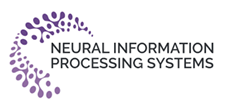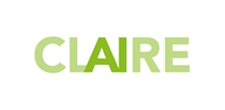
ΑΙhub.org
articles
Training AI requires more data than we have — generating synthetic data could help solve this challenge
The rapid rise of generative AI has brought advancements, but it also presents significant risks.
26 July 2024, by
The Conversation
Record labels are suing tech companies for copying classic songs – and the results could shape the legal future of generative AI
Find out more about recent cases of alleged copyright infringement.
22 July 2024, by
The Conversation
#RoboCup2024 – daily digest: 21 July
In the last of our digests, we report on the closing day of competitions in Eindhoven.
21 July 2024, by
Lucy Smith
#RoboCup2024 – daily digest: 20 July
In the second of our daily round-ups, we bring you a taste of the action from Eindhoven.
20 July 2024, by
Lucy Smith
#RoboCup2024 – daily digest: 19 July
Welcome to the first of our daily round-ups from RoboCup2024 in Eindhoven.
19 July 2024, by
Lucy Smith
Are models biased on text without gender-related language?
We test if models are free of gender bias in cases where there are minimal gender correlations.
09 July 2024, by
Catarina Belem
New open-source platform allows users to evaluate performance of AI-powered chatbots
Researchers have developed a platform for the interactive evaluation of chatbots such as ChatGPT.
01 July 2024, by
University of Cambridge
AIhub monthly digest: June 2024 – network resource allocation, protein structure prediction, and a Ge’ez-Amharic-English dataset
Welcome to our monthly digest, where you can catch up with AI research, events and news from the month past.
27 June 2024, by
Lucy Smith
New computer vision method helps speed up screening of electronic materials
The technique characterizes a material’s electronic properties faster than conventional methods.
26 June 2024, by
MIT News
Viruses are doing mysterious things everywhere – AI can help researchers understand what they’re up to in the oceans and in your gut
Using "protein language models" to classify previously unseen viral sequences.
24 June 2024, by
The Conversation
Machine learning-aided thermography for building heat loss detection
Machine learning can automate building energy diagnostics using thermal imaging.
21 June 2024, by
University of Waterloo
AI chatbots are intruding into online communities where people are trying to connect with other humans
Casey Fiesler investigates Meta's AI chatbot
18 June 2024, by
The Conversation
How to regularize your regression
Considering how to tune the norm-based regularization parameters in linear regression.
17 June 2024, by
ML@CMU
Learning programs with numerical reasoning
Introducing a novel approach to efficiently learning programs with numerical values
13 June 2024, by
Céline Hocquette
Mapping phase diagrams with generative classifiers
Researchers have developed a new method for calculating phase diagrams of physical systems.
05 June 2024, by
University of Basel
An iterative refinement model for PROTAC-induced structure prediction
Working towards facilitating the understanding and rational design of proteolysis targeting chimeras
AI can now generate entire songs on demand. What does this mean for music as we know it?
What do music generation tools change, and what might they mean for artists and the way we all consume it?
30 May 2024, by
The Conversation
AIhub monthly digest: May 2024 – causality and natural language, AfriClimate AI, and digital twins for smart cities
Welcome to our monthly digest, where you can catch up with AI research, events and news from the month past.
29 May 2024, by
Lucy Smith
Machine learning accelerates discovery of solar-cell perovskites
An EPFL research project has developed a method based on machine-learning to quickly and accurately search large databases
28 May 2024, by
EPFL
Madagascar’s ancient baobab forests are being restored by communities – with a little help from AI
The collaboration between communities and scientists aims to restore baobab forests in Madagascar to their natural state.
24 May 2024, by
The Conversation
#ICLR2024 invited talk: Priya Donti on why your work matters for climate more than you think
How is AI research related to climate, and how can the AI community better align their work with climate change-related goals?
21 May 2024, by
Lucy Smith
Trotting robots offer insights into animal gait transitions
A four-legged robot trained with machine learning has learned to avoid falls by spontaneously switching between walking, trotting, and pronking
17 May 2024, by
EPFL
Machine learning enhances monitoring of threatened marbled murrelet
CNN analysis of data gathered by acoustic recording devices is a promising new tool for monitoring secretive species.
16 May 2024, by
Oregon State University
Understanding AI outputs: study shows pro-western cultural bias in the way AI decisions are explained
Researchers found that many existing systems may produce explanations that are primarily tailored to individualist, typically western, populations
14 May 2024, by
The Conversation
5 questions schools and universities should ask before they purchase AI tech products
Every few years, an emerging technology shows up at the doorstep of schools and universities promising to transform education.
01 May 2024, by
The Conversation
AIhub monthly digest: April 2024 – explainable AI, access to compute, and noughts and crosses
Welcome to our monthly digest, where you can catch up with AI research, events and news from the month past.
30 April 2024, by
Lucy Smith
We built an AI tool to help set priorities for conservation in Madagascar: what we found
Daniele Silvestro has developed a tool that can help identify conservation and restoration priorities.
24 April 2024, by
The Conversation
Machine learning viability modelling of vertical-axis wind turbines
Researchers have used a genetic learning algorithm to identify optimal pitch profiles for the turbine blades.
22 April 2024, by
EPFL
Beyond the mud: Datasets, benchmarks, and methods for computer vision in off-road racing
Off-road motorcycle racing poses unique challenges that push the boundaries of what existing computer vision systems can handle
17 April 2024, by
ML@CMU
#AAAI2024 workshops round-up 4: eXplainable AI approaches for deep reinforcement learning, and responsible language models
We hear from the organisers of two workshops at AAAI2024 and find out the key takeaways from their events.
12 April 2024, by
AIhub









